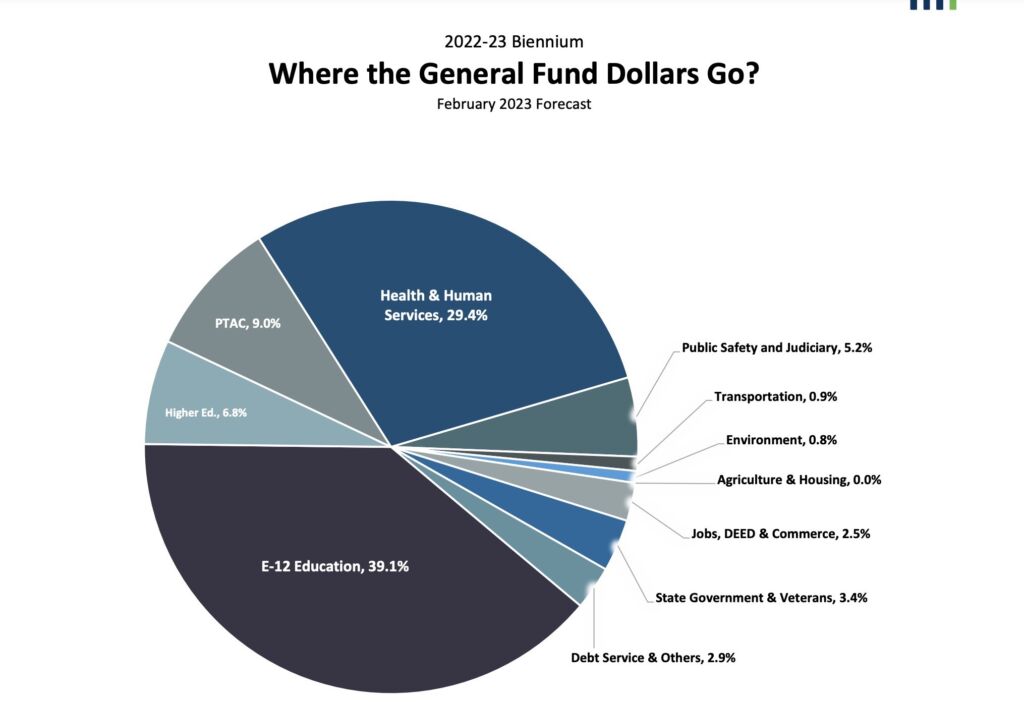Where Minnesota’s $17.5 billion surplus went: Free college
After E-12 Education, Health and Human Services, and Property Tax Aids and Credits (PTAC), Higher Education is Minnesota’s fourth biggest expenditure. In the 2022-2023 biennium, for example, a little over $3.5 billion — or 6.8 percent of state general funds — went to Higher Ed. This is more than the total combined spending for Transportation and Public Safety.

Among numerous programs, a significant chunk of Higher Ed spending is used to subsidize the cost of college through numerous programs. These include:
- The State Grant Program: This is the state’s biggest grant program. It helps low- and middle-income students pay for college expenses.
- The Post-Secondary Childcare Grant: Helps students with young children pay for childcare while they attend college.
- The Minnesota Work Study Program: Provides jobs to students.
- Interstate tuition reciprocity: Reduces tuition for Minnesota students in out-of-state institutions
- American Indian Scholarship: Provides financial assistance to American Indian college students.
- Tribal College Supplemental Grant Assistance Program: Provides financial assistance to tribally controlled colleges.
Thanks to Minnesota’s newly passed $72 billion budget, Higher Ed is about to get a big funding boost, and so are these assistance programs. Specifically, in the 2024-3035 biennium, Higher Ed will get an extra $650 million, bringing total spending to $4.2 billion (not including inflation). Higher Ed also gets an extra $450 million in the 2026-2027 biennium, bringing its budget to nearly $4 billion.
The most notable new program for this extra money in the Higher Ed Omnibus bill is perhaps the ‘North Star Promise’ — a new program that will pay the full cost of college for students whose household income is less than $80,000. The program is estimated to cost over $200 million in the next four years. That’s not all, however.
To combat declining enrollment, the legislature has decided to give Minnesota colleges $150 million of their money to freeze tuition. Native Americans — who already get scholarships — will also get free college. There are also hundreds of millions for the Minnesota State College system and other millions in one-time support payments to colleges.
Generally, research shows that
people who can make it through college, even though they may have a low current income, have a high wealth
This is due to two reasons. People who finish college usually have higher potential than those who do not finish college. So, they inherently have levels of higher human capital. Secondly, finishing college equips one with skills to command a higher wage. This leads to higher lifetime earnings and thereby high wealth.
So, next time you are wondering why your taxes are up while the state collected an extra $17.5 billion in taxes, remember that the DFL decided to use your tax dollars to provide free college and expand other Higher Ed subsidies — for people who might go on to make more money than you in their lifetime — rather than give you your tax dollars back.